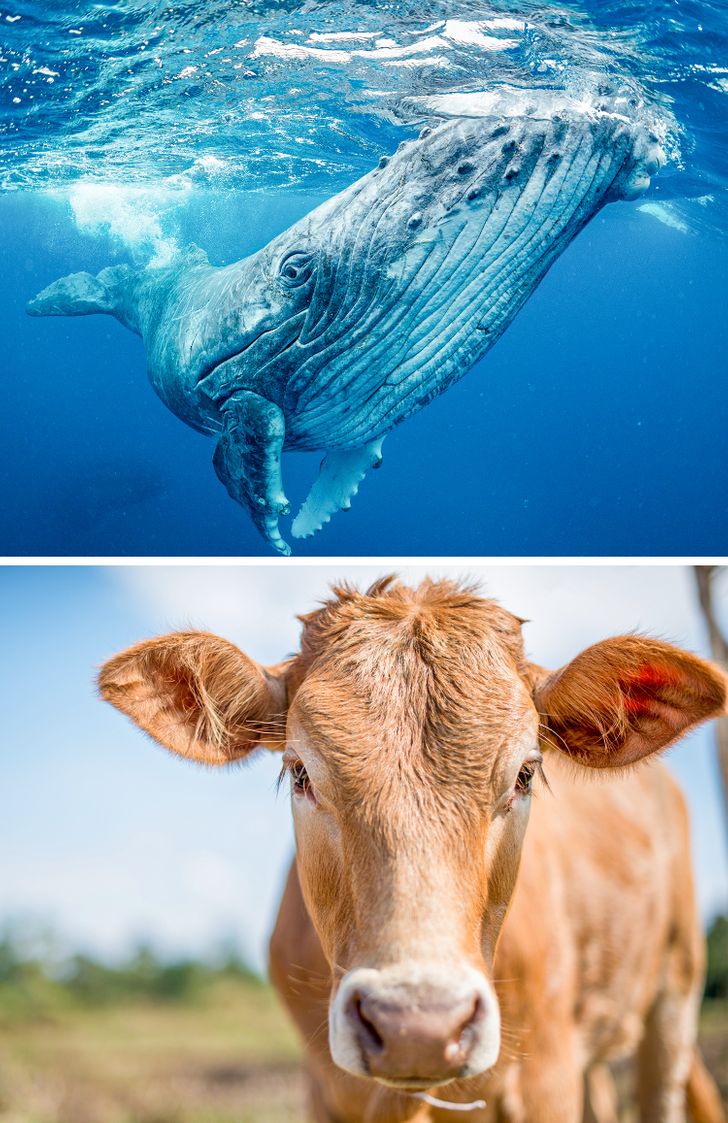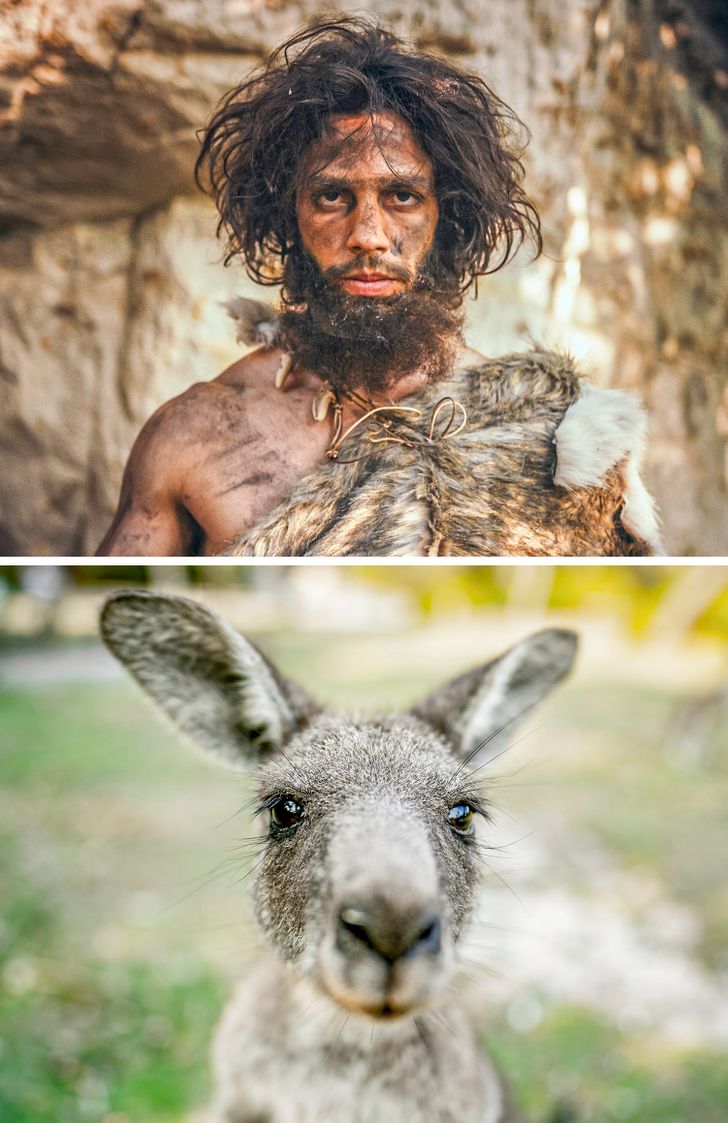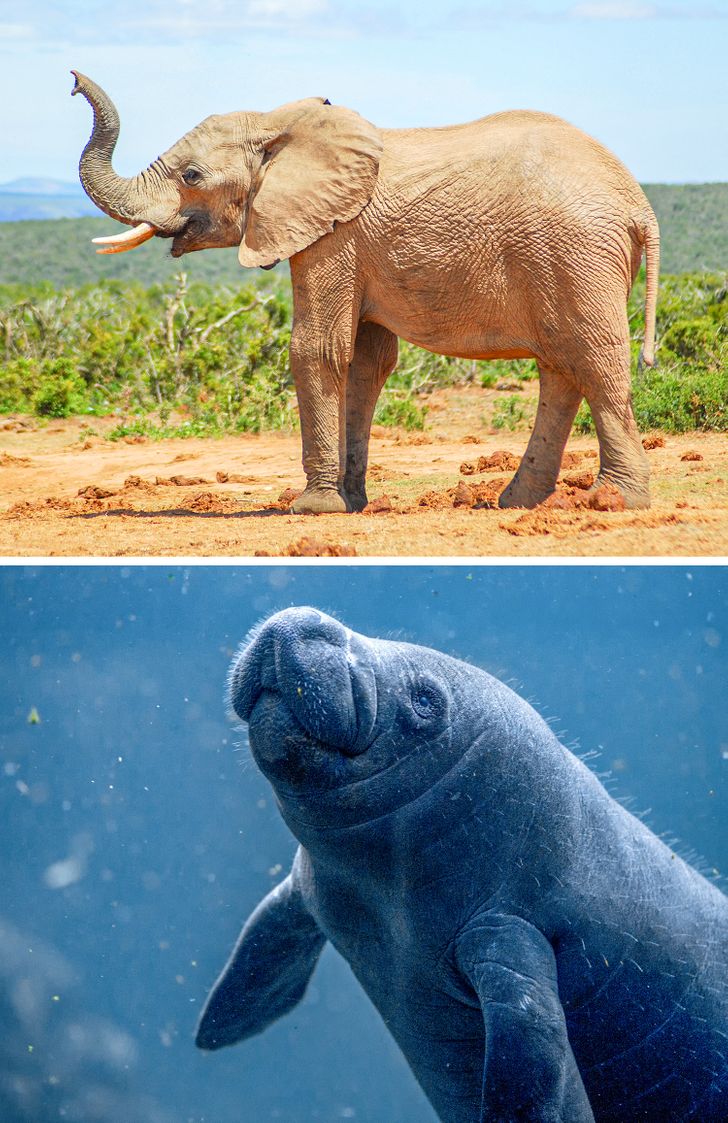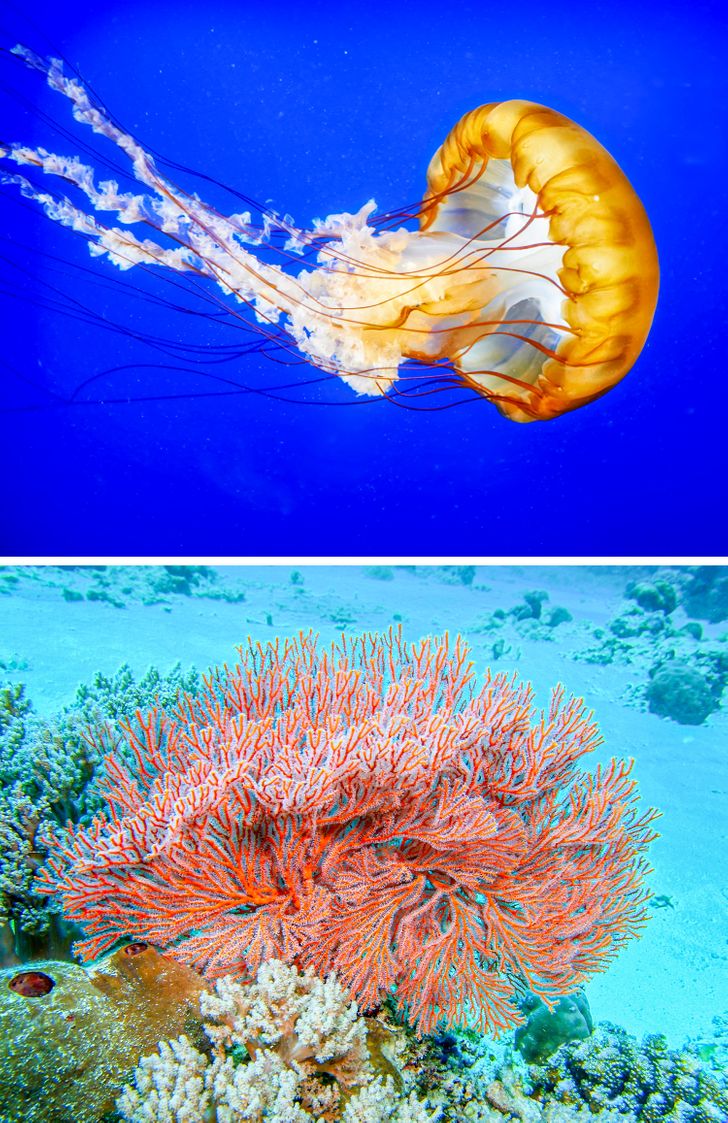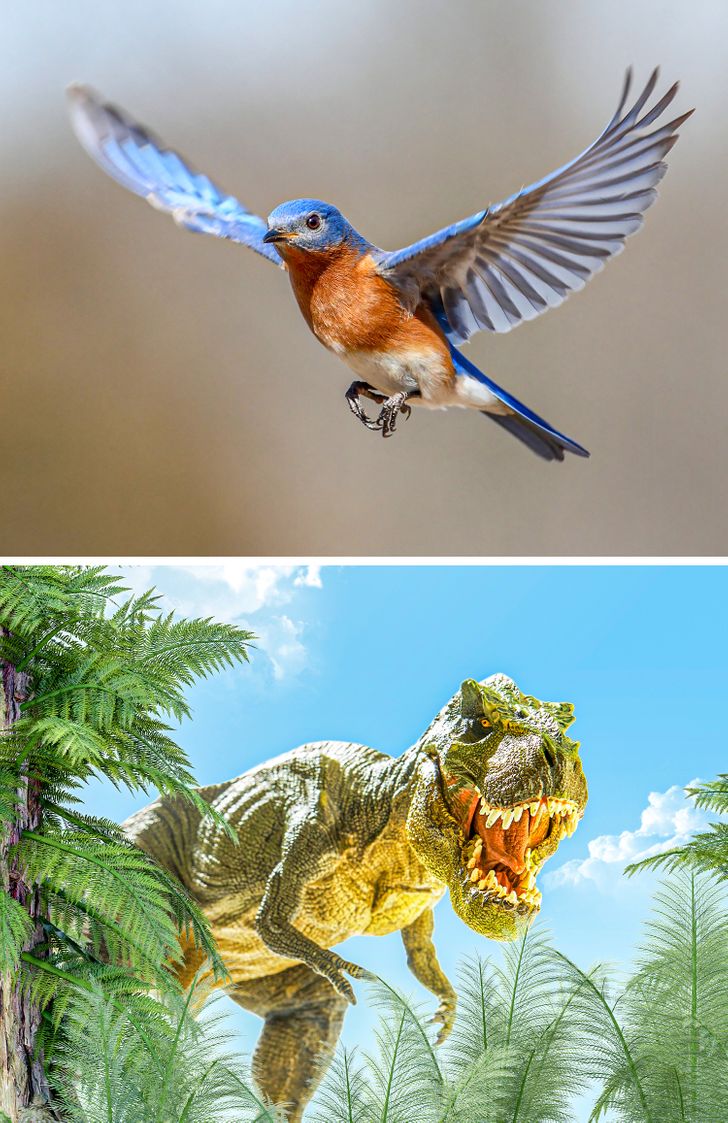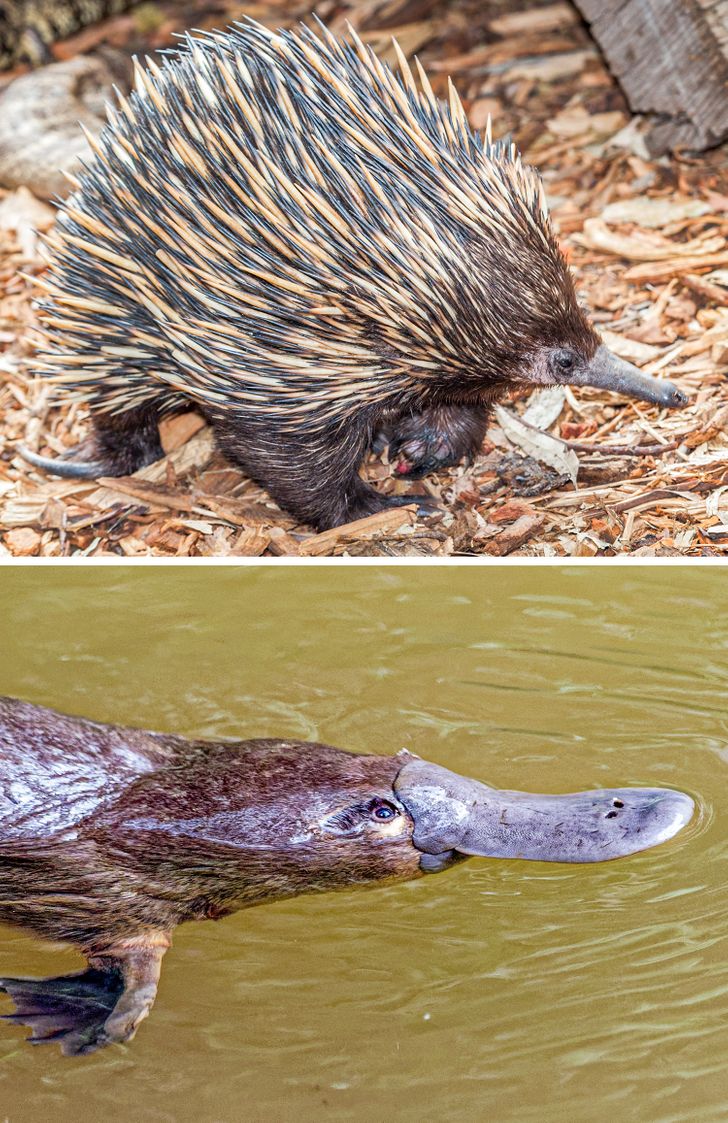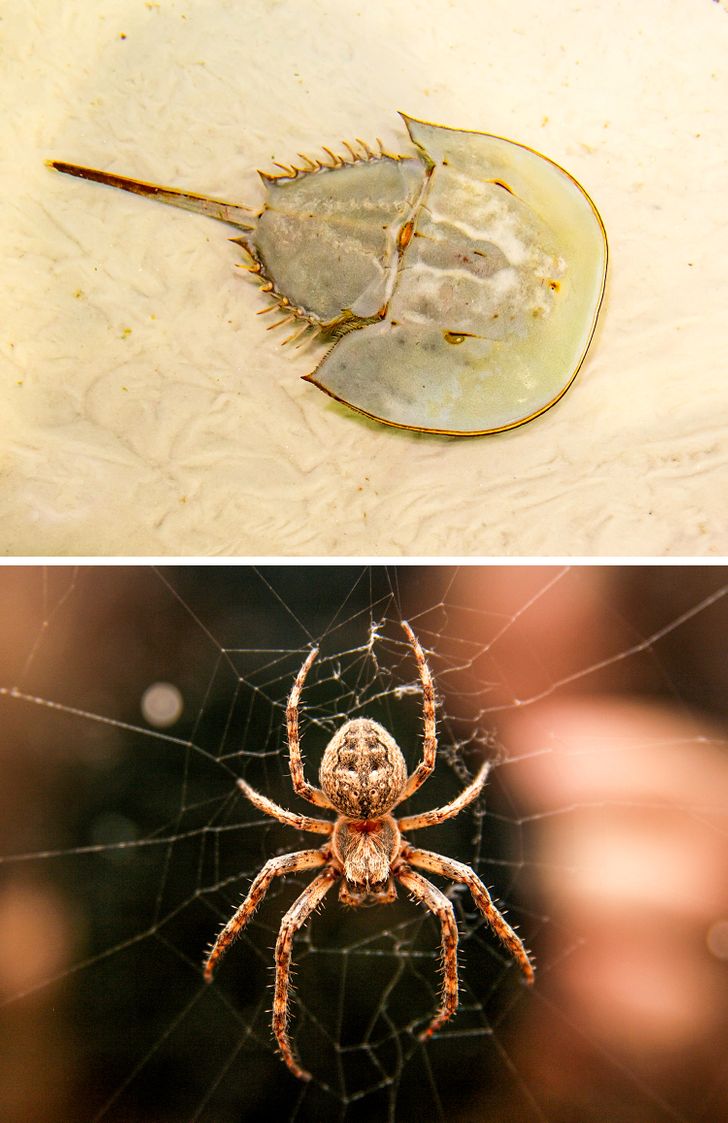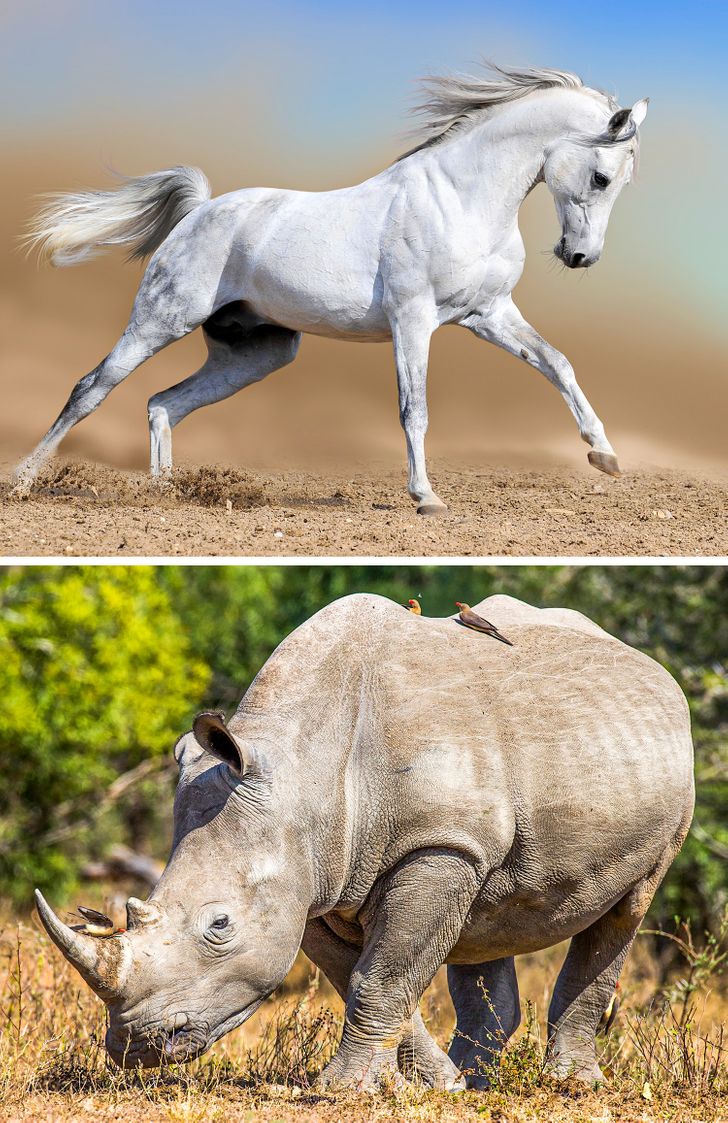I thought lizards and dinosaurs were related
8 Animals You Had No Idea Were Related
Current estimates for the number of species on Earth range between 5.3 million and 1 trillion. Anything from small insects in the Amazonian rainforest to the gargantuan blue whales roaming the oceans. It sounds like the habitats of our planet are diverse and seemingly unconnected in any way, but when we take a closer look, strange relations emerge.
We at Bright Side want to present you with some shocking family trees, connecting animals that seem completely different at first glance.
1. Whales and Cows
Imagine how hard it would be to get your morning bowl of cereal if the main source of the added milk were... whales. That sounds quite over-the-top, but you will be surprised to find out the truth.
Whales and cows share a common ancestor — a small mammal with slender legs and hooves that lived in southern Asia called Indohyus (meaning “India’s pig”). Even though these creatures (that were the size of raccoons or domestic cats) were mostly land-dwellers, they had a particular relationship with the nearby rivers. The evidence suggested Indohyus used the waters as a safe zone from predators — the development of aquatic feeding behavior emerged much later.
The strongest evidence for cows and whales being “cousins” comes from the molecular examination of the 2. It turns out that the closest living relatives to whales are a group of hoofed animals called artiodactyls that includes cows, pigs, hippos, and giraffes. It sounds like the family gatherings of these groups during the holidays might be quite awkward.
2. Humans and Kangaroos
You versus a kangaroo in a running contest — who wins? Not to be bearers of bad news but kangaroos can run at speeds of up to 44 mph and Usain Bolt’s record for speed is 27.78 mph (and not to assume anything, but you most defiantly are no Usain Bolt). So kangaroos are just built differently from us humans?
Not if we talk about our genomes. Human and kangaroo DNA share some undeniable similarities.
Despite diverging from our evolutionary path, kangaroos still share a sentiment with their distant cousins — us. Research shows that kangaroos try to communicate with humans and ask for help by “pointing” in different directions. This behavior is also associated with domestic animals like dogs.
3. Elephants and Manatees
Manatees are often called sea cows and that is uncalled for. They are “clearly” more like “sea elephants.” You don’t quite see it? Let’s look deeper.
It turns out that Proboscideans (a group of animals that includes elephants, mammoths, and mastodons) have a common ancestor with manatees. Despite our knowledge of the evolution of sea cows having substantial gaps, it is believed that these particular animals descended from a 4-legged mammal (early forms appeared around 55 million years ago).
Еlephants and manatees bear some visual similarities also (a large trunk clearly not being one of them). Their bodies are covered with bristle-like hairs. Manatees use them to orient themselves in their environment (by sensing vibrations).
4. Jellyfish and Coral
One roams the seas and the oceans freely, while the other fancies itself more like a plant (holding ground in one place), but the truth is that jellyfish and coral are both animals. And yes, they are also related.
They belong to an ancient group of animals called Cnidarians. The members of this group lack organs, like lungs and a heart. They don’t have a brain either and instead have a nerve net that engulfs their body. Jellyfish and coral have similar tools for offense, too — they use their tentacles to sting unfortunate nearby swimmers.
Despite being “cousins,” the relationship between these 2 species is not always sunshine and rainbows. Sometimes coral team up to launch coordinated attacks against their much more mobile family members — jellyfish. When the jelly makes the mistake of swimming too close to the coral reef, some of the coral will grab their prey with their tiny tentacles and grip tight. Others soon join the party, completely trapping the jellyfish.
Now that’s teamwork.
5. Birds and Dinosaurs
Which came first — the chicken or the egg? It turns out the real answer is... dinosaurs!
The birds you see flapping their wings around you descended from theropods (group of 2-legged dinosaurs including the cunning velociraptors and the legendary Tyrannosaurus Rex). But the complete transformation from T-rex to a fluffy yellow chick definitely didn’t come overnight.
Fossils continue to emerge presenting us with “transitional” species. In 2018, Chinese paleontologists discovered the 127-million-year-old Jinguofortis perplexus. This discovery revealed an important point in the development of flight — when birds lost the dinosaur tail but hadn’t developed a fan of feathers found in the modern bird’s tails.
6. Echidnas and Platypus
Wait, a mammal that lays eggs? Yes, behold these 2 peculiar creatures (that are related to each other).
The echidna and platypus are part of a family of mammals called monotremes. Despite having plenty of genetic similarities, they radically differ in many regards. For example, the echidna eats insects like ants and termites, but the platypus is carnivorous.
Many of the main differences are also quite obvious. You just have to take a look — the echidna sports a long thin nose, excellent for sniffing out delicious insects. As for the platypus’ soft duck-like bill — it is covered with thousands of receptors and acts as a detector for finding prey.
7. Horseshoe Crabs and Spiders
Horseshoe crabs are literally legends from a distant time — they are called “living fossils” and are more than 480 million years old, making them more ancient than dinosaurs. But don’t let the name fool you. Horseshoe crabs are actually in a group called Chelicerata (which includes spiders and scorpions).
These primordial creatures have many bizarre attributes. For example, despite having relatively poor eyesight, their eyes are a million times more sensitive to light at night than during the day. The most unique aspect about them is their blue blood. It contains powerful immune cells which are incredibly sensitive to toxic bacteria. When bacteria are present, the immune cells gather around them, making sure the horseshoe crab is left unharmed.
8. Horses and Rhinos
How ridiculous would it be if the prince in the fairytales was to emerge on a white... rhino. Despite how bizarre that sounds horses and rhinos are part of the same group called Odd-toed ungulate (perissodactyla) and share a command ancestor.
Fossils of animals called Cambaytherium thewissi were found a couple of years ago in India. With its characteristics being close to those of a tapir it is believed that this creature is related to all living perissodactyls.
A fascinating fact about the animals in this group is that they primarily use the middle toe to support their weight. In some extreme cases like with modern-day horses, the remaining toes have completely merged with the middle one — hooves allow them to cover longer distances and run at higher speeds.
Which 2 animals did you have the hardest time believing were related? Do you know of more pairs that sound this odd?
Comments
there are some dinosaurs that are only distantly related to modern snakes, lizards, and turtles, groups
oh snakes and tortoises are there too
ofc they are lizards 😃
interesting I had no idea about these
Related Reads
25 People Who Got Insanely Lucky and Couldn’t Keep It a Secret

15+ Times a Solution to a Problem Was So Simple We’re Surprised We Missed It

20+ People Whose Good Deeds Prove That Evil Doesn’t Stand a Chance in Our World

18 True Stories With Unreal Plot Twists

16 Families Who Have Very Different Opinions on How to Raise Children

15 Stories That Have More Unexpected Twists Than a Hollywood Blockbuster

10 Parents Who Held Their Children’s Hands Through Life’s Stormiest Moments

20 Crazy Wedding Stories Guests Won’t Soon Forget

16 Details of Life in the 19th Century That Would Shock Modern People

12 People Who Could Teach Cupid a Thing or Two About Love

12 People Who Discovered Secrets They Shouldn't Have Known

20 Employees Share How They Left a Lousy Job Without Looking Back

